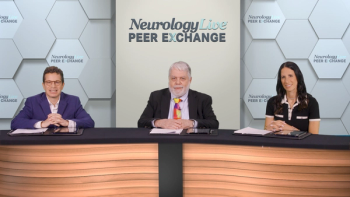
Clinician Specialty Shows No Impact on Migraine Preventives Rates Among Young Adults
In a sample of more than 750 patients with migraine, clinician specialty had no impact on preventive prescription, with small differences observed in the choice of tricyclic antidepressants.
Data from a recently published, multicenter, retrospective cohort study showed that approximately two-fifths of young adults aged 18 to 25 years old were prescribed preventive medications for migraine, with similar prescription rates between pediatric and adult neurologists.1
The analysis included 767 patients who had a diagnosis of migraine between 2017 and 2021 at an outpatient visit to a Mass General Brigham (MGB) neurologist. Of these, 290 (37.8%) were seen by a pediatric neurologist and 477 (62.2%) seen by an adult neurologist. Preventive medications were prescribed in 43.9% (n = 337) of the total population, with 45.2% (131 of 290; 95% CI, 39.5%-51.0%) and 43.2% (206 of 477; 95% CI, 39.0%-47.7%) of those seen by pediatric and adult neurologists, respectively, getting prescriptions (P = .591).
"This finding suggests that pediatric neurologists are providing comparable care to adult neurologists for young adults with migraine; however, this may represent the underuse of preventive medications in this patient population," lead author Hannah Shapiro, MD, pediatric neurologist and headache specialist at the University of California, San Francisco, and colleagues, concluded.
Most of the cohort had a diagnosis of episodic migraine (72.8%) with fewer had chronic migraine (25.4%). Using a mixed effects logistic regression model, clinician specialty was not associated with preventive medication use (adjusted odds ratio [aOR], 1.20; 95% CI, 0.62-2.31); however, investigators did observe positive associations for female sex (aOR, 1.69;95% CI, 1.07-2.66) and number of visits (aOR, 1.64; 95% CI, 1.49-1.80).
Coming into the study, there were no between-group differences in patient sex, race, or ethnicity. A total of 52 unique neurologists (27 pediatric; 25 adult) made up the sample, with psychiatric as the most common (12.7%) comorbidity seen. In terms of medication selection, topirmate (Topamax) was the most commonly prescribed therapy for arriving patients from both adult (19.1%) and pediatric (15.2%) neurologists.
Of note, chronic migraine made up a larger proportion of patients in the adult neurology group (30.4% vs 17.2%; P <.001). Despite this, having a diagnosis of chronic migraine was not associated with receiving preventive medication, to which authors wrote, "this finding could be explained by inaccurate or nonspecific coding of different migraine disorders or by understanding that the frequency of migraine attacks is only one aspect of the decision to prescribe preventive medication."
READ MORE:
The second most common prescribed medications were tricyclic antidepressants, such as amitriptyline and nortriptyline. Amitriptyline was prescribed more often by pediatric neurologists (14.5% vs 5.5%; P <.001) while nortriptyline was prescribed more often by adult neurologists (2.4% vs 12.8%; P <.001).
The association between the frequency of neurologist visits and increased likelihood of preventive medication prescriptions was consistent with other studies and potentially explained by the fact that patients with higher disease severity are more likely to seek frequent care, Shapiro et al noted. Factors such as more debilitating attacks, side effects of treatments, or significant functional disability related to migraine were all noted as other potential reasons for greater disease severity.
In terms of limitations, the study was adjusted for several demographic and clinical variables in that may confound the relationship between clinician specialty and prescription of preventives, as well as there was no confirmation of dispensation or consumption of the medications. While the study included multiple neurology clinics, all of them were affiliated with a single institution, and thus additional studies are needed to assess the generalizability of the findings.
REFERENCE
1. Shapiro HFJ, Loder E, Shapiro DJ. Association between clinician specialty and prescription of preventive medication for young adults with migraine: a retrospective cohort study. Headache. 2023;63(9):1232-1239. doi:10.1111/head.14628
Newsletter
Keep your finger on the pulse of neurology—subscribe to NeurologyLive for expert interviews, new data, and breakthrough treatment updates.









































